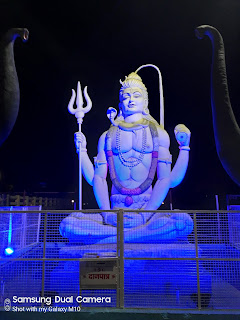History of Applying Sindoor on Forehead by Indian Women

Sindoor (vermilion) is a red, orange or ochre colored cosmetic powder used by mainly married women of Indian subcontinent. It is made from cinnabar (a naturally occurring form of mercury sulfide), turmeric and lime. Image courtesy: Flickr Significance of Applying Sindoor by Indian Women- Image courtesy: Flickr Sindoor has a lot of importance in Indian culture. There is a tradition of applying sindoor on parting of hairs by married Hindu women. It is considered very auspicious and applied for long life of their husbands. Traditionally, the unmarried women and widows do not apply sindoor. A woman's bindi may also be made from sindoor. Mythology- Sindoor is symbolized as energy of goddess Parwati, the wife of god Shiva. The Indian women believe that the goddess Parwati protects all those men whose wives apply sindoor on their forehead. Historicity of Applying Sindoor as Cosmetic- The practice of cosmetics is believed to have or...

